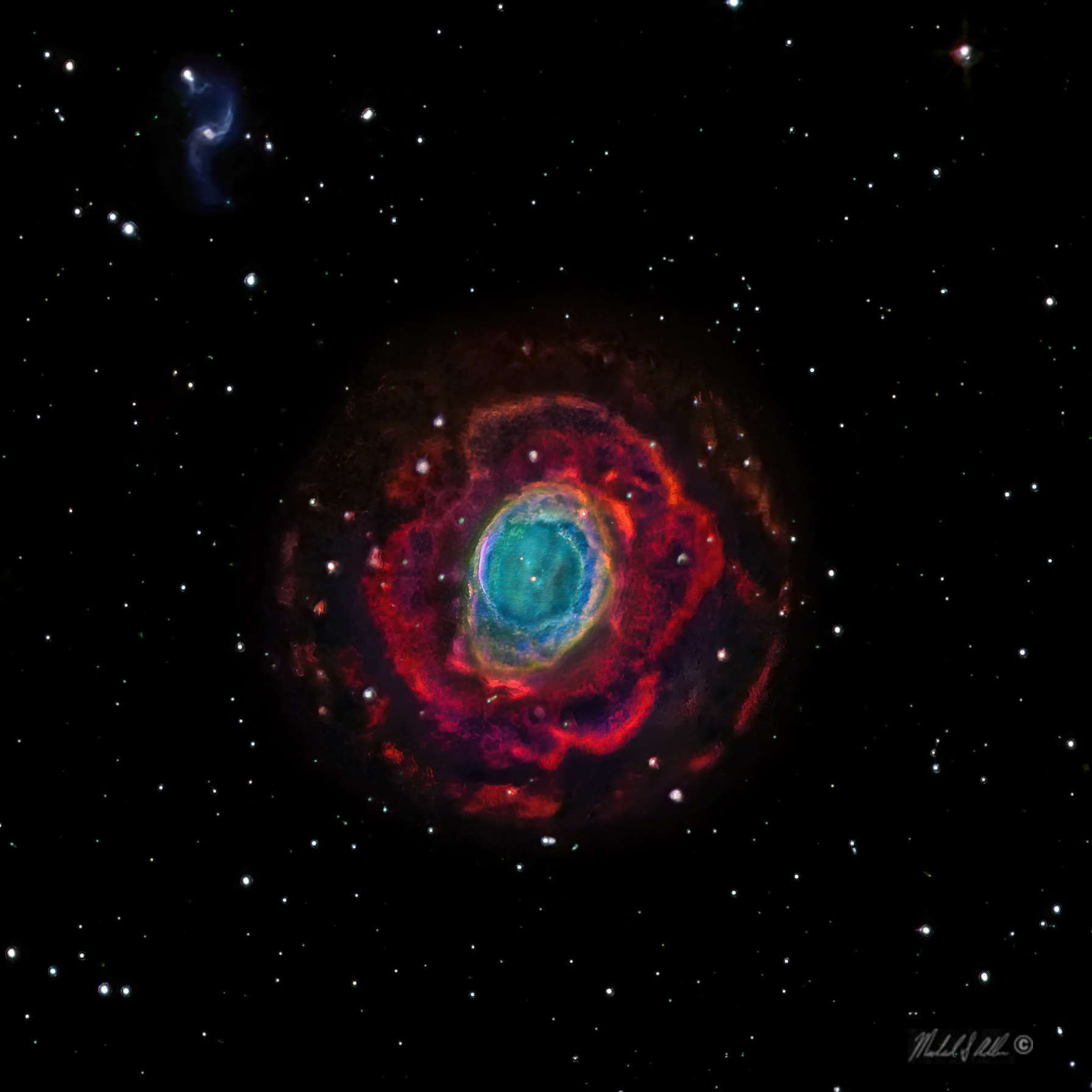Optics: 20″ Planewave CDK20
Mount: Software Bisque Paramount ME II
Camera: FLI PL16803
Filters: Astrodon Ha,Oiii 3nm, FLI, LRGB
Dates/Times: July 2020, Aug 2017, June 2022
Location: Adler Earth and Sky Observatory, Jackson Hole, WY
Exposure Details: Ha=110x20min, 1:1 , Oiii=100x20min, 2:2, Sii=42x20min, 4:4LRGB=19x10min, RGB 2:2,total 328 images, 83hr
Acquisition & Guiding: MaximDL/TheSkyX, MOAG, SBIG STi
Processing: MaximDL, Photoshop CC2020, Center and stars LRGB, outer rings NB, Ha red, Sii green, Oiii blue, BlurX, Topaz GigaPx AI
Ring Nebula, Messier 57 Narrowband & True Color
Original price was: $65.00.$52.50Current price is: $52.50.
Ring Nebula, Messier 57 A star with mass similar to that of our Sun will convert its hydrogen into helium and then will convert its helium into carbon and oxygen. However, after the helium is gone gravity will not be able to heat it enough to start another fusion nuclear reaction. It will greatly contract and then throw off its outer gasses after fusion has stopped in its core. These are called planetary nebulas not because they are planets but are spherical like planets. One of the most visually spectacular of these planetary nebula is the pictured Ring Nebula. The appearance as a ring is really an illusion of projection – the nebula is actually a spherical shell. At the center a blue dot is visible which is the old core of the star, known as a white dwarf. These stars have the mass of the Sun but are the size of the Earth and their minimum size is limited by electron degeneracy which prevents electrons from coming too close to other electrons. A star 10x the size of the sun will not die quietly like the sun but explodes into a supernova and produces either a neutron star or a black hole. As dense as a white dwarf is a neutron star’s density is 100 million times denser than a white dwarf as all of the electrons combine with protons and form neutrons which can be packed much, much denser. The details of how the star throws off the gas that becomes the nebula is not known and each planetary nebula has a very distinctive shape. Look at the Dumbell nebula, Messier 27 or the Helix nebula NGC 7293 which are also planetary nebulas.
This image was taken with my Planewave 20” telescope and my Finger Lakes Instruments PL16803 camera and is a combination of 328 images taken over 83 hours, a record for the longest exposure of any of my images. Most of the imaging time was done with atomic filters capturing light from the emission of mainly hydrogen and oxygen atoms. The Hydrogen emission is shown as red which is its true color, Oxygen emission is blue which is also its true color and Sulfur emission is green. This extended exposure was necessary to capture the double outer fan portion of the image. When visually observing the Ring nebula through a telescope all ones sees is very center portion of the image shown here. This center portion portion and the stars were taken with regular color filters.


